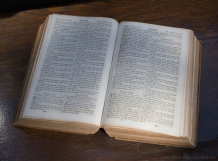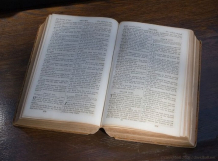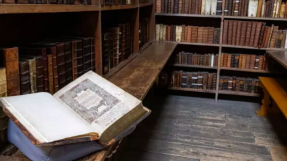
The Bible is known for many things. It is the most revered book for Christians, and it also contains sacred texts for the Jews. It is also the most widely translated book in the world, having been translated into 2,400 of the world's 6,800 languages.
Now, the Bible also holds the distinction as one of the few books to have a nano version—a version with text so small that it could fit on the tip of a pen.
The world's smallest version of the Bible, conceived by Uri Sivan and Ohad Zohar, was created by scientists from the Technion-Israel Institute of Technology in Haifa, located in Northern Israel.
How exactly was this diminutive version of the Holy Book made? The scientists created a very thin layer of silicon, with a thickness of less than 100 atoms, to which they placed a golden plating.
Using a focused ion beam, a machine usually used in the semiconductor industry to etch surfaces, the scientists carefully engraved 1.2 million characters, one at a time, blasting away the gold plating to reveal the silicon beneath.
Sivan, one of those who conceptualised the Nano Bible, said he wanted to spark people's interest both in God's Word and technology.
"More than any other book, the Bible symbolises the transmission of human civilisation from one generation to another. We tried to connect to the device. We wanted to get people curious about the revolution that is taking place before their eyes," he said.
If you are interested in reading this nano version of the Bible, the font would have to be magnified about 10,000 times to make it readable.
The miniature book, considered to be a feat in engraving, is now displayed at the Israel Museum as part of its 50th anniversary exhibition.
Israel Museum President James Snyder said the Nano Bible is a good way of turning something as ancient as the Bible to something modern.
"Our objects begin a million-and-a-half years ago. They come to the present. They cross that timeline and they go around the globe, and in a way, they represent the entire narrative of material cultural history from a place as important to that history as Jerusalem is," Snyder said.
















